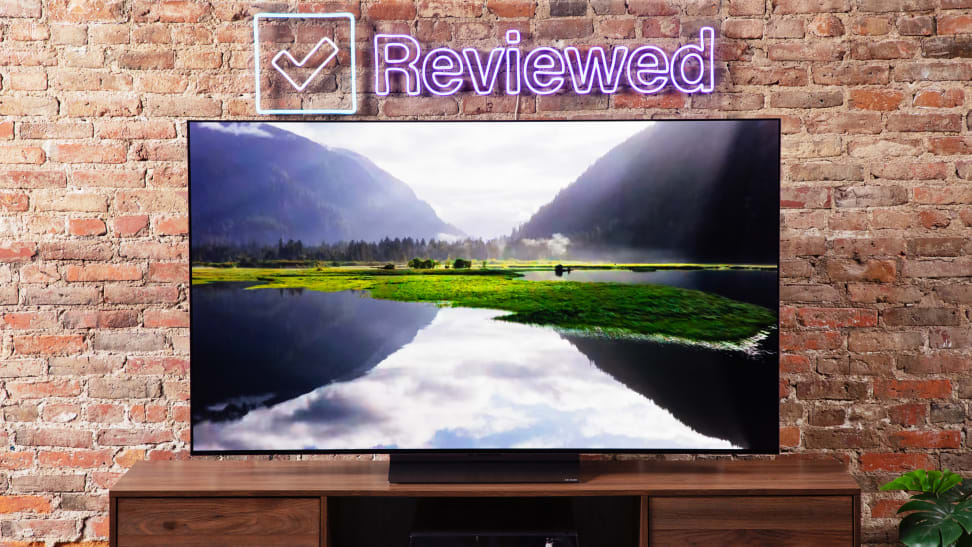 Credit:
Reviewed / Timothy Renzi
Credit:
Reviewed / Timothy Renzi
Products are chosen independently by our editors. Purchases made through our links may earn us a commission.
The LG C3 and the LG G2 are two incredible OLED TVs separated by a year. The C3 is the 2023 version of LG’s second-best OLED series, while the G2 is the crown jewel of LG’s 2022 lineup.
We’ve spent an extensive amount of time with both of these TVs, so we’re ready to get into the details to help you pick between them. Here’s everything you need to know about these two impressive TVs—from pricing to picture quality.
Editor's note (February 14, 2024): This article has been updated to reflect new information about each TV series, including sale pricing.
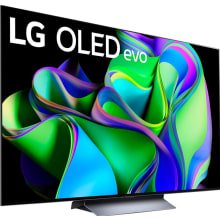
The LG C Series OLED returns with incredible contrast, vivid and accurate color, and gaming features galore.
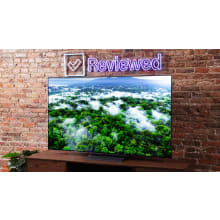
The LG G2 OLED TV has incredible contrast, sensational color, and is ready for the next-generation of gaming.
Price
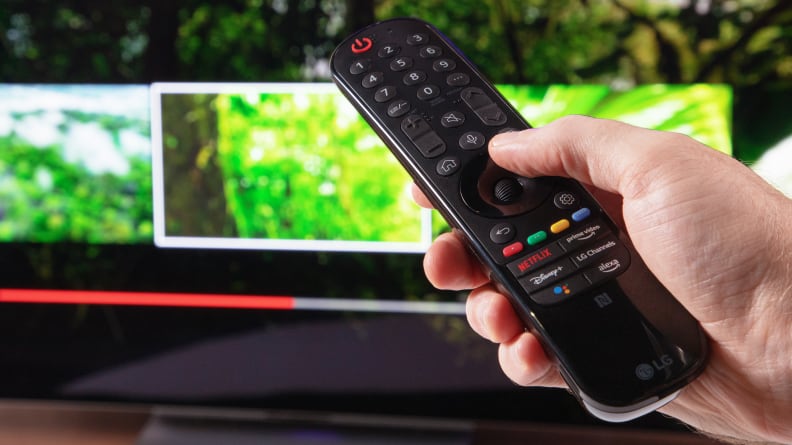
Both TVs come with LG's Magic Remote, which can be used as a motion-activated wand or with a traditional directional pad.
The C3 is a 2023 release and the G2 is a 2022 release, so these prices are in constant flux. Some of the models might also be unavailable. Here's how both series currently shake out.
LG C3:
- 42-inch (LG OLED42C3PUA), MSRP $1,399.99 (on sale for $896.99 at Amazon)
- 48-inch (LG OLED48C3PUA), MSRP $1,499.99 (on sale for $996.99 at Amazon)
- 55-inch (LG OLED55C3PUA), MSRP $1,899.99 (on sale for $1,296.99 at Amazon)
- 65-inch (LG OLED65C3PUA), MSRP $2,600 (on sale for $1,596.99 at Amazon)
- 77-inch (LG OLED77C3PUA), MSRP $3,599.99 (on sale for $2,296.99 at Amazon)
- 83-inch (LG OLED83C3PUA), MSRP $5,299.99 (on sale for $3,996.99 at Amazon)
The LG C3 is available in six sizes. In addition to the standard 55- and 65-inch models, there are two extra-large options (including an 83-inch variant), as well as two smaller options, one of which being a modest 42-inch model that some might find useful as a monitor. Right now, the 55-inch and 65-inch models are on sale for around $1,300 and $1,600, respectively.
LG G2:
- 55-inch (LG OLED55G2PUA), MSRP $2,199.99 (on sale for $1,686.99 at Amazon)
- 65-inch (LG OLED65G2PUA), MSRP $3,199.99 (on sale for $2,196.99 at Amazon)
- 77-inch (LG OLED77G2PUA), MSRP $4,199.99 (on sale for $3,307.99 at Amazon)
- 83-inch (LG OLED83G2PUA), MSRP $6,499.99 (on sale for $4,726.99 at Amazon)
- 97-inch (LG OLED97G2PUA), MSRP $24,999,99
The smallest size in the G2 series is a 55-inch version, so people in the market for a 48- or 42-inch OLED will have to consider alternatives. That said, there are 77- and 83-inch variants, and LG even offers a larger-than-life 97-inch option for a whopping $25,000. Right now, a 55-inch version is discounted down to about $1,700, while a 65-inch G2 is on sale for around $2,200.
The C3 takes this category, as it's currently available in more sizes at lower price points.
Our pick: LG C3
Design
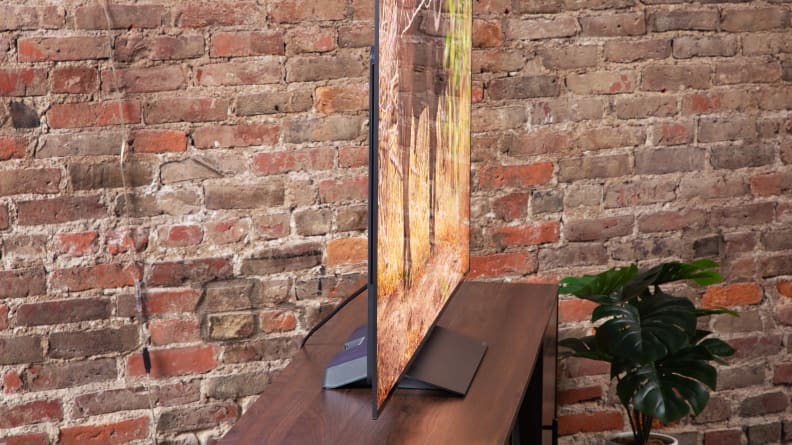
Svelte and sleek, the LG C3 is easy to assemble and easy on the eyes.
Both TV’s ship with near-identical versions of LG’s Magic Remote. It works the same as a traditional remote, but it features motion-activated controls so you can use it as a wand. When activated, an on-screen cursor will track your hand movements. I find that the feature comes in handy when managing an on-screen keyboard or cycling through a grid of content options.
LG’s G series OLED is intended to hang on the wall like a portrait. Its wall bracket (included with the TV) is super thin, which keeps the G2 closer to the wall than traditional wall-mounting brackets. Its display is flanked by an elegant, silver frame, which adds to the air of artful sophistication. Simply put, it’s one of the best-looking (if not the best-looking) TVs to wall-mount.
For anyone planning on using a more traditional, tabletop setup, an optional stand for the G2 is sold separately. If you purchase the separately-sold stand, you may be disappointed (as we were) by the amount of wobble present in this setup.
The G2’s stand also makes the panel lean back, like an easel. You’ll probably get used to the panel’s slight tilt, but anyone hesitant about the G2’s back-leaning position should keep this in mind.
The C3 can also be wall-mounted, of course, but it doesn’t sit flush against the wall like the G2. On the other hand, because it’s designed for a tabletop setup first and foremost, its stand is not an afterthought. It’s a rectangular, metallic slab with a heavy anchor that attaches to the panel from behind. It looks quite sharp from all angles and keeps the panel securely in place. The stand only offers about two inches of soundbar clearance, however, so those with soundbars on the taller side ought to consider its measurements.
Another benefit of the C3 is its weight. It’s built with a lightweight, composite-fiber material, making the initial setup (and future repositioning) relatively easy.
This is a tough category to rule on. On one hand, the G2 is truly a sight to behold when mounted on the wall. If you intend to wall-mount your next TV, there aren’t very many that look better than the G2 (and I’d argue that all of them are G series OLEDs from LG).
However, most people don’t wall-mount their TVs, and the C3 is the undeniable winner when comparing the look and stability of each TV in their tabletop formation.
Our pick: LG C3
Features and smart platform
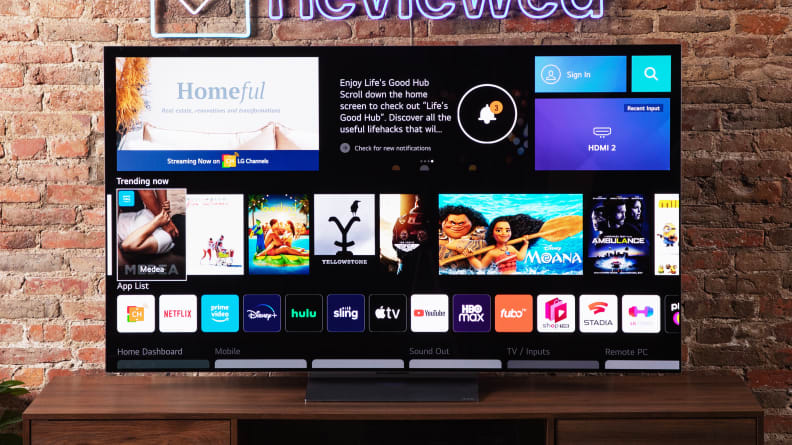
You can choose from a variety of entertainment apps for streaming.
These are two high-end LG OLEDs released in back-to-back years, so it shouldn’t come as a surprise that they share many of the same hardware- and software related features. Here’s a rundown of what they have in common.
- Resolution: 4K (3,840 x 2,160)
- Display type: OLED
- HDR support: Dolby Vision, HDR10, HLG
- Dolby Atmos: Yes
- eARC support: Yes
- Native refresh rate: 120Hz
- Smart platform: webOS
- Color: DCI-P3 color space/10-bit chroma resolution
- Variable Refresh Rate (VRR): Yes
- Auto Low Latency Mode (ALLM): Yes
- Other features: AMD FreeSync Premium Pro, Nvidia G-Sync compatibility, Game Optimizer, Filmmaker Mode, Amazon Alexa, Google Assistant, Apple AirPlay, Apple Home
If you squint at lists of each of these TVs’ features, you might not be able to tell the difference. Both support Dolby Vision, what many consider to be the preeminent HDR format. It’s intended to present HDR content in the manner closest to the creator’s intent. Dolby Vision content is available on Blu-ray, across several popular streaming platforms (like Netflix and Apple TV+), and on current-gen Xbox consoles.
In addition, both the C3 and the G2 can decode Dolby Atmos audio natively or pass it via eARC to Dolby Atmos soundbars—either uncompressed (Dolby TrueHD) or compressed (Dolby Digital Plus). One key difference between these TVs, however, is that only the C3 supports DTS audio. When the G2 was released last year, LG was not offering DTS audio support on any of its high-end TVs. The C3 is one of the first LG TVs to bring the format back into the fold.
On the gaming side of things, we’re seeing double yet again. Both OLED TVs offer sensationally low input lag and a laundry list of gamer-friendly enhancements. Each TV supports Variable Refresh Rate (VRR) and Auto Low Latency Mode (ALLM) for smooth, low-latency gaming. Plus, all four of their HDMI inputs support 4K gaming at 120Hz, which means you can connect up to three devices to game-optimized inputs and still have room for an eARC-enabled soundbar.
LG’s nifty gaming settings suite, Game Optimizer, is present on both TVs, too. Game Optimizer relays frame rate information, offers genre-specific picture adjustments, and gives folks easy access to VRR settings.
And what about smart features? Both the C3 and G2 run webOS, with the G2 using webOS 22 and the C3 using webOS 23. Functionally, they’re almost identical, with the C3 being marginally faster as a result of its updated processor. The software is somewhat hampered by sponsored content and recommendations, but then again, almost every smart platform is, too. I find webOS to be a reasonable daily driver for most, but those looking for a simpler, more robust experience would do better pairing their LG OLED with a good streaming device.
When you get right down to it, the biggest separation between these TVs’ features is the C3’s DTS audio support. Yes, the C3’s software is a bit snappier, but I don’t think it represents a significant increase in usability. From A/V- to gaming-related features, these two TVs are basically the same.
Our pick: Draw
Performance
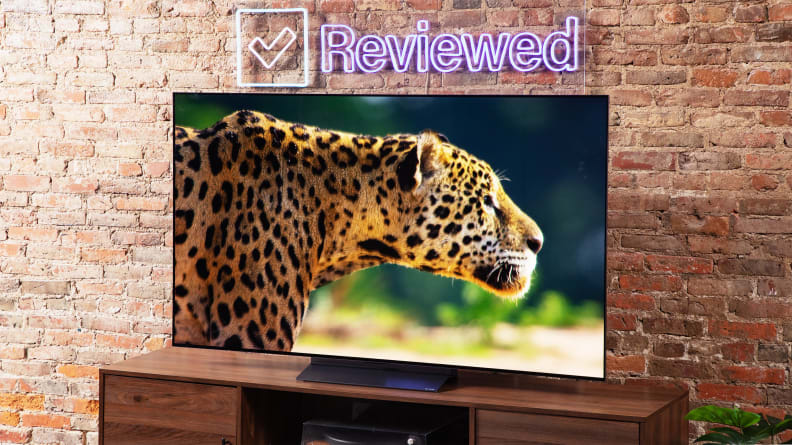
While both TVs have perfect black levels thanks to OLED technology, the G2 can get brighter for more engaging HDR.
Being OLED TVs, the C3 and G2 deliver many of the same performance benefits we’ve come to expect from the celebrated display technology: perfect black levels, rich, accurate color, and the widest viewing angles available today. They’re also backed by LG’s superb picture processing. But the G2 has a trick up its sleeve: a heat sink in its panel that allows it to get brighter than the average OLED TV.
At the time of its release, the G2’s heat sink-equipped display was its primary selling point over LG’s C series OLED. It allows the G2 to produce specular highlights in the 900- to 1,000-nit range—an impressive figure, even a year later. However, even without the heat sink, the C3 gets plenty bright enough for HDR content to truly pop. HDR highlights clock in at around 800 nits, and to help bridge the gap between its C and G series lineups, LG has equipped the C3 with a special brightness-boosting algorithm that better focuses the TV’s brightness.
Nevertheless, I suspect most people would see a noticeable difference in brightness, were they to view the C3 and G2 side by side. The G2’s average picture brightness is about the same as the C3’s, but small, concentrated areas of brightness (and the details therein) are better expressed on the G2.
Brightness isn’t the be-all and end-all aspect of picture quality, but it is the most noteworthy difference between the C3 and G2’s picture. When it comes to color, both of these TVs serve up an impressive palette. They each cover about 99% of the HDR color gamut (DCI-P3), with a bit of an edge going to the G2 on account of its added luminance. Near-black performance is roughly the same, too—which is to say, excellent. The C3 and G2 do a good job of preserving detail when emerging from pure black, and they limit near-black artifacting better than LG OLEDs of years past.
One quirk you might notice on both TVs is a very slight pink tint on white picture elements when viewed off-axis. As I mentioned before, OLED TVs do a bang-up job of preserving contrast and color accuracy during off-axis viewing. But, like all newer LG OLEDs, large swaths of white (a snowy landscape, for instance, or a hockey rink) will often shift into a pale pink when viewed from an angle, and this is something that can be seen on both the C3 and G2. It’s only noticeable during very specific types of content, but it does happen on both TVs.
The edge goes to the G2, if only for its added brightness. The main takeaway here should be that both TVs offer incredible, top-of-the-line picture quality.
Our pick: LG G2
And the winner is…

Make sure to consider how sunny your living room is before purchasing this TV.
This matchup comes down to whatever your particular needs happen to be, but the C3 is the better pick for a larger swath of shoppers.
The benefits of the G2 are clearly apparent. Its picture quality is slightly better due to its added brightness and it looks better wall-mounted than the C3. If you have your heart set on a wall-mounted setup, the answer is obvious: Buy the better-performing OLED that’s been designed from the ground up to hang on a wall.
If you have no interest in wall-mounting your TV and prefer a traditional tabletop setup, the answer is not so obvious. The C3’s stand design is far superior to the G2’s, and it actually comes with the TV, so you don’t have to spend extra money on it. Additionally, it’s available in 48- and 42-inch size options while the G2 is not.
At the time that this article was originally published, the G2 was available for less money than the C3, and we hadn't yet reviewed the G2's successor, the LG G3. As of February 2024, G2 inventory has shrunk considerably and the G3 is starting to see significant discounts.
The C3, on the other hand, is more affordable now than it's ever been. We think it's a better fit for more people.

The LG C Series OLED returns with incredible contrast, vivid and accurate color, and gaming features galore.

The LG G2 OLED TV has incredible contrast, sensational color, and is ready for the next-generation of gaming.
